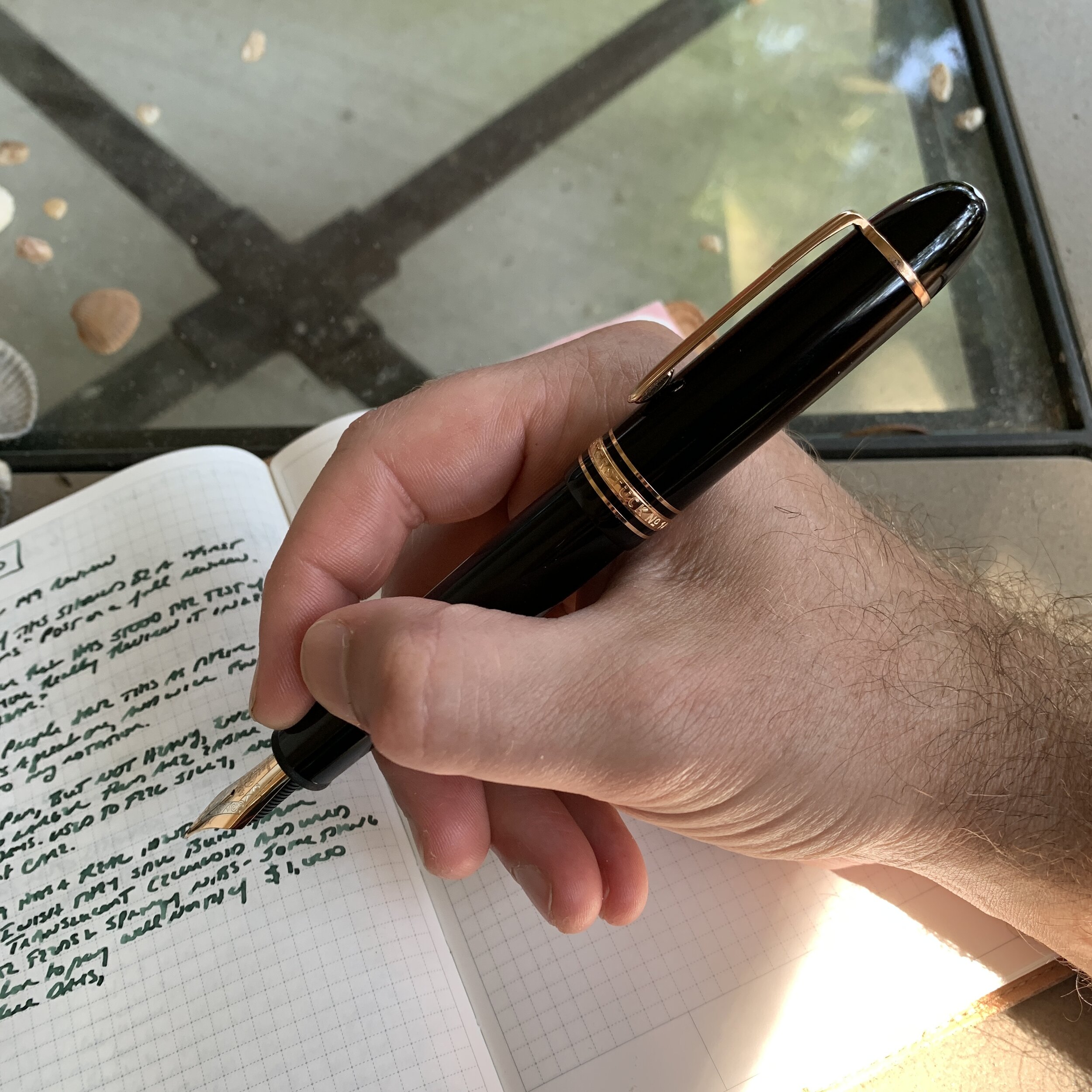As Platinum pens become increasingly popular outside of Japan, I get more questions regarding this pen company’s sometimes quirky marketing. For example, Platinum emphasizes “Slip & Seal” technology that supposedly prevents ink from evaporating in a pen that sits unused for long periods of time. The claim used to be that the pen would still write after a year of sitting idle, and while Platinum seems to have walked this back to “three to six months,” you still see “Slip & Seal” mentioned everywhere, including in Platinum’s new mid-range Procyon that I reviewed back in January.
Two pens that feature Slip & Seal technology: The Platinum 3776 (shown on the left in the “Oshino” demonstrator model), and the Procyon (right).
How Does Platinum’s Slip & Seal Technology Work?
For a detailed, illustrated explanation, check out the Luxury Brands USA website. (Luxury Brands is Platinum’s U.S. distributor, and their website contains a wealth of information regarding the various Platinum models). The short version is that the Slip & Seal mechanism uses a spring-loaded inner cap that seals against the body when the pen is capped, creating an “airtight” seal. Platinum incorporates the Slip & Seal technology into both the Procyon and the 3776, both of which are screw-cap pens.
Pens from left: Platinum Procyon, Preppy, and Plaisir. Writing samples in this review done on Write Notepads Copper Anniversary Edition Pocket Notebooks.
As I mentioned in my Procyon review, I’ve never paid much attention to the “Slip & Seal” claims. I don’t ink pens and leave them unused for months, at least not intentionally. But I was curious. So I decided to set the Procyon aside for a while and compare any ink evaporation to a Preppy and Plaisir that I keep inked on my desk, neither of which feature the screw-cap Slip & Seal technology. As it turns out, the mechanism definitely works. After six months of non-use, the ink cartridge in the Procyon showed little, if any, evaporation, and the pen wrote perfectly. Compared against the Preppy and Plaisir, the difference was notable.
After 8 months to a year (not sure exactly when I last inked these pens), the Platinum Preppy and Plaisir both showed greater signs of ink evaporation. While these two pens don’t have the exact same mechanism as the 3776 or the Procyon, they still utilize an inner cap system that does an excellent job of keeping the pens functional.
The cartridge in the Procyon, on the other hand, had little to no ink evaporation after six months. Nearly all of this ink was spent writing.
All three pens wrote immediately, though the ink in the Preppy and Plaisir was definitely more concentrated from evaporation and had a bit of a “gummy” feel to it.
The Big Question: Does Slip & Seal Add Value?
Who should care about Slip & Seal? Obviously, if you have a pen that you only use infrequently, such as a music nib used for signatures on documents, or a ultra-extra-fine (UEF) nib that you use to make very small annotations and takes forever to go through ink, something like this could be quite helpful. Also, if you use iron gall and pigmented inks, which can clog and even corrode nibs and feeds if left in pens for long periods of time, you want to minimize the potential for evaporation that would cause these inks to become overly concentrated. (Note: Platinum sells both iron gall and pigmented inks in their lineup. I have no idea whether this had anything to do with the development of Slip & Seal, but it’s a fair question.) One thing I don’t know is whether the Slip & Seal technology is equally as effective with converters as it is with Platinum’s cartridges. While the cartridge is a solid piece of plastic, the converter is not, and creates multiple opportunities for air to enter and accelerate evaporation.
Overall, I’m not sure whether Slip & Seal adds value to the pen for the majority of people, but given how it performed in my Procyon, I’m glad it’s there. While Platinum has long marketed the Slip & Seal technology with their flagship 3776 line, I personally find it most useful in a less expensive pen like the Procyon, which I would be more inclined to ink with a cartridge and leave at the office or in a place where I might need to make quick notes from time to time and not use on a daily basis. At the end of the day, Slip-and-Seal may not be a feature that would specifically draw me to Platinum and cause me to purchase a 3776 or Procyon over a pen from another brand, but I do like having the feature and would characterize it as a “plus.”
All Platinum Pens pictured in this review can be purchased at most Platinum retailers, including site sponsors Pen Chalet, Vanness Pens, and Goldspot.

